
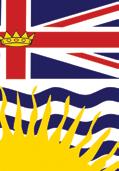




Silent power: Innovative tugs redefine noise standards along B.C.’s coast
Electrifying excellence: B.C. leads with electric tugs on the global stage
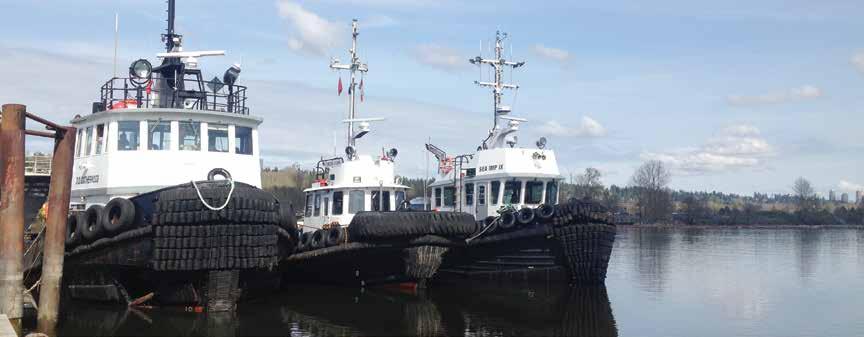
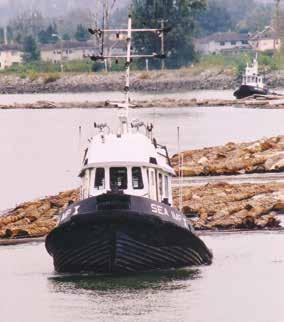

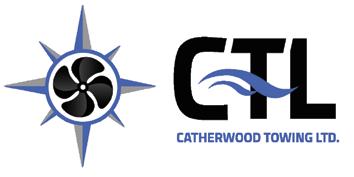
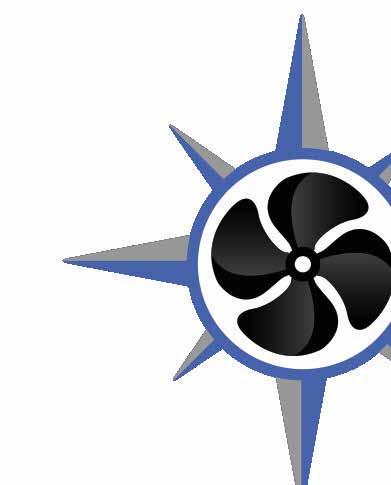


Seaforth Environmental Service have commissioned 3GA Marine to develop the design of an electric boom tug with hybrid range extender to support their oil boom operations.
The design features a 225kw propulsion motor, one 116kW genset, and a 294 kWh energy storage system. The service speed is 4-6 knots, with an estimated top speed of 8 knots. Bollard pull is estimated to be 4.5 MT.
Energy storage is provided via Akasol battery modules, while the propulsion system is provided by Danfoss Editron. Propulsion is provided via a single shaft driven fixed pitch propeller.
Construction of the vessel started in March 2023. Once complete, this vessel’s performance will be monitored as part of Canada’s Zero Emissions Propulsion Systems (ZEPS) program.
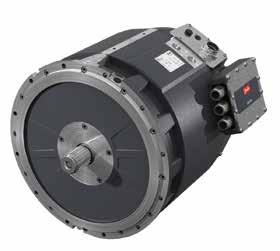


Electric/Hybrid Tug Specifications
• Length 12.1m • Breadth 5.17m • Depth 2.5m
• Over 15 GT
• Loaded displacement 59.5 MT
• Main propulsion power 1 x 225 kW
• Maximum speed 8 knots est.
• Service speed 4 to 6 knots est.
• Energy storage capacity 294kWh+
• Bollard pull 4.5 MT+ est.
• Genset power 116 kW
• Steel construction
• MDO storage capacity 4.8 m3
Revolutionary marine electrification technology is significantly reducing operating costs and compelling ship owners to modernize their fleets. Strong environmental policies, financial incentives, and lowered expenses create a compelling business case for fleet electrification. 3GA is at the forefront of this transformation, actively electrifying the Pacific West Coast by offering comprehensive design and build services for cutting-edge electric propulsion systems. In most instances, our solutions eliminate greenhouse gas emissions, earn substantial carbon intensity credits, and save ship owners money by utilizing cost-effective electricity supplied by BC Hydro.
3GA Marine can design electric vessels from scratch, or we can utilize Direct Vessel Propulsion Performance Data Acquisition to assess your existing operations and create an electrification feasibility strategy specific to your existing vessel. Funding is available for feasibility studies.
Contact 3GA Marine today for more information!

1575-3777 Kingsway Burnaby, BC V5H 3Z7 604-205-5550
208-1497 Admirals Victoria, BC V9A 2P8 250-920-9992
• Complement 2 info@3gamarine.com www.3gamarine.com


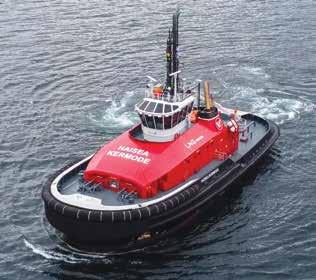
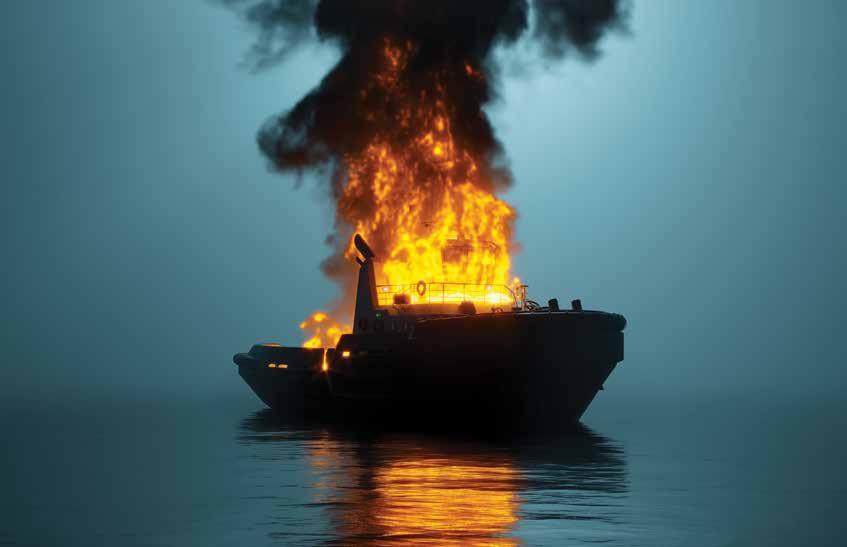

Welcome to the spring 2024 issue of B.C. Tugboat magazine, where we explore the tugboat industry that is helping shape the maritime landscape of British Columbia.
In this edition, we spotlight HaiSea Marine’s ground-breaking achievement with the HaiSea Wamis, the first fully electric tugboat to earn an Underwater Noise Notation from the American Bureau of Shipping. Bernard LLP takes us on a journey through contract formation, drawing on insights from the Suez Canal incident. Join us at the upcoming Fraser River Discovery Centre’s Fraser River Hall of Fame event, where the esteemed Catherwood family is honoured for their contributions to the industry.
Explore innovative designs with features from 3GA Marine Ltd. and Robert Allan Ltd., and take a tour of Victoria’s Point Hope Maritime, where vessels undergo renewal and rejuvenation before returning to the sea.
Discover why B.C. stands tall as a global leader in electric tug technology and delve into reports from the Port of Vancouver and Port of Prince Rupert.
We hope you enjoy this edition of the B.C. Tugboat and visit us online at bctugboat.com for the latest in industry news and information. See you in the fall. a
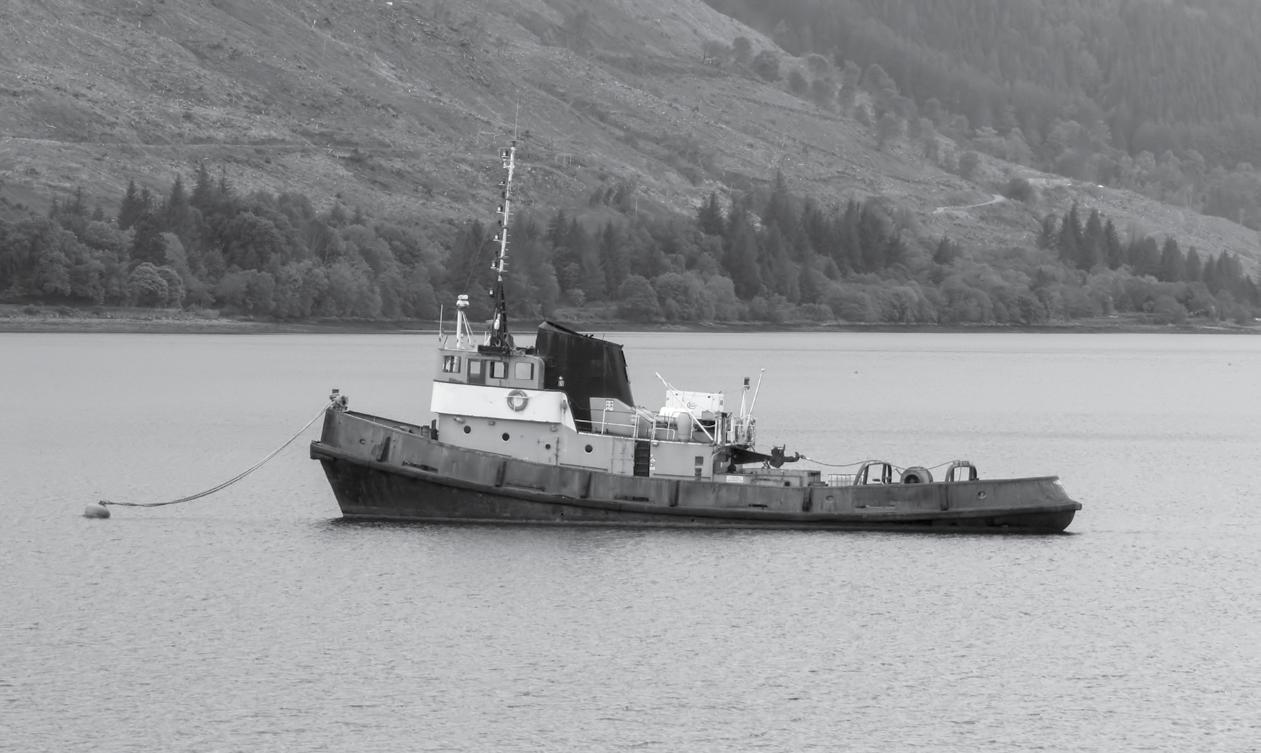


The

newest,
The greenest, And the most powerful fleet of harbour tugs.
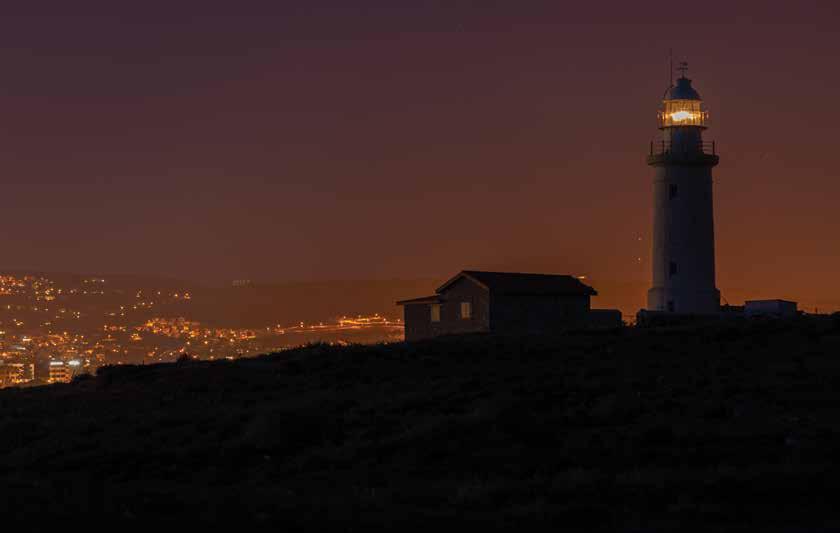 By Robert Anderson, Associate, Bernard LLP
By Robert Anderson, Associate, Bernard LLP
After making headlines worldwide in March 2021 there’s been little discussion of Ever Given, the 399 metre long, 199,489 DWT container vessel of 20,388 TEU capacity that grounded in the Suez Canal and brought one of the world’s busiest maritime trade routes to a halt. The recent decision of the England and Wales Court of Appeal in The Ever Given (Salvage Claim) [2024] EWCA 260 has brought the Ever Given back into the foray and provides a valuable reminder to those engaged in the maritime industry to ensure the certainty of terms in their service contracts, and the intention of each party to the contract to be bound by them.
The owners of the Ever Given sought salvage assistance from SMIT Salvage B.V. to free the vessel from the banks of the Suez after the grounding. The owners and SMIT were aware of the typical contract templates for salvage operations (such as WRECKHIRE and Lloyd’s Open Form) and agreed on several other elements of the salvage through email exchanges. SMIT presented two offers outlining certain terms and conditions for the salvage, with the owners making a counteroffer but only in respect of remuneration for the salvage services. SMIT responded to the counteroffer and noted “we shall follow up with the drafting of the contract”, but those remaining

terms, including remuneration, were never agreed upon. SMIT ultimately deployed a salvage team and arranged for two tugs (with 285 and 155 metricton bollard pulls) to assist in the refloating, and the vessel was successfully refloated almost a week after the grounding.
In the months that followed the refloating, a dispute arose as to whether SMIT’s services were provided pursuant to a contract formed in those email exchanges (which would limit SMIT’s remuneration to whatever value was agreed in that contract) or whether the services were in the nature of salvage under the International Convention on Salvage, 1989 and/or common
law, which would allow for SMIT to be remunerated up to the value of the salved property. SMIT then brought a lawsuit against the owners claiming there was no contract, with the owners arguing that the SMIT’s services were subject to a pre-existing contract (ie. the email exchanges).
The High Court reviewed the email exchanges found that although there was agreement between the owners and SMIT on several points of the salvage operation, the parties were still negotiating the terms of the contract at the time the vessel was refloated on 29 March 2021, including the terms of remuneration for SMIT’s services. This meant, according to the High Court, that there was no contract for salvage services by the date the vessel was refloated, and SMIT’s remuneration was not capped by a term of the alleged contract. The owners appealed to the England and Wales Court of Appeal, which affirmed the High Court’s decision that there was no contract between the owners and SMIT, and it found that the agreement on the remuneration was only part of a larger negotiation towards a binding contract which was never actually reached.
factual, and our domestic Courts will typically employ the same considerations as the Courts in the Ever Given did to determine the intention of each party during contract formation and whether they intended to be bound by those terms. It is therefore important, for both specialized
and standard contracts, that time and consideration is spent to ensure that no ambiguity arises on the central elements of the agreement, and that each party’s interests are addressed, protected, and drafted adequately into the four corners of the document. a
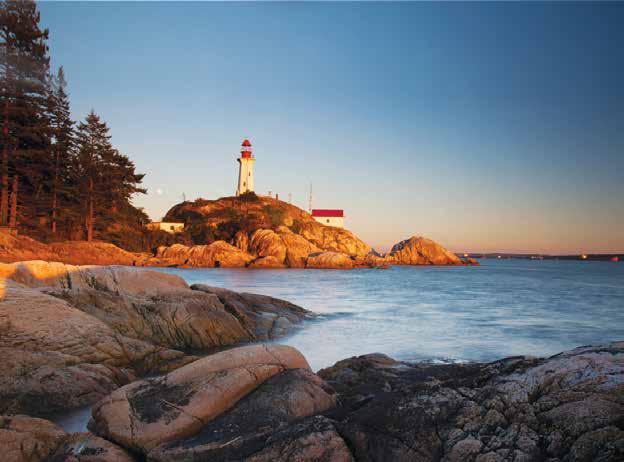
Although a foreign case, the Ever Given decision is a reminder of how easily terms of an agreement can get overlooked in the frenzy of communication during time sensitive events. Contract formation is highly
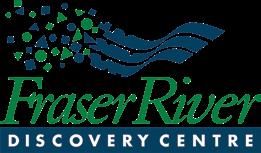
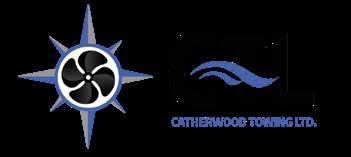
The Fraser River Discovery Centre (FRDC) in New Westminster provides a way to explore a living, working Fraser River – with thriving peoples, ecosystems, and livelihoods – from the headwaters to the Salish Sea. The FRDC’s mission is to bring together the many voices of the Fraser to discover, celebrate, and inspire passionate stewards of the river.
Discover the stories and diversity of the entire Fraser River. Through rotating exhibits and hands-on programs, the Fraser River Discovery Centre presents the river’s contribution to the life, history, and future of British Columbia and its people.
In 1991, The Fraser River Discovery Society established the Fraser River Hall of Fame to recognize and honour the many individuals, families, businesses, and organizations who have made noteworthy contributions to the Fraser River’s culture, people, industry, and environment.
This year’s inductee into the Fraser River Hall of Fame is the Catherwood Family. Since Catherwood Towing Ltd. (CTL) was established in 1971, Ernie Catherwood and his family has made significant contributions to the economic vitality of the Fraser River. Based out of Mission, B.C., CTL has been providing comprehensive tug and barge services, log boom towing, and marine construction equipment towing and tending.
This year’s event takes place at the Swan-e-set Bay Resort in Pitt Meadows on Tuesday, June 11. The FRDC is still looking for sponsors to support this event and provide interesting and unique items for the silent auction. The Fraser River Hall of Fame is the
FRDC’s largest fundraising event of the year. More info and tickets for the induction of the Catherwood Family into the Fraser River Hall of Fame are now available through the FRDC website at https:// fraserriverdiscovery.org/halloffame. a
The FRDC’s mission is to bring together the many voices of the Fraser to discover, celebrate, and inspire passionate stewards of the river.

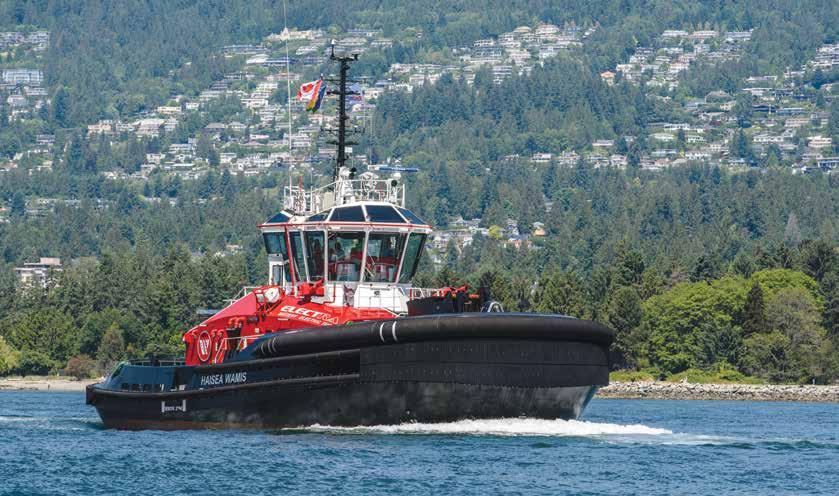
The HaiSea Wamis is so quiet that it would take 10 electric tugboats running side-by-side to produce the same underwater noise as a single conventional diesel tug.
HaiSea Marine’s first fully electric tugboat, the HaiSea Wamis, is now also the first tugboat to receive an Underwater Noise Notation from the American Bureau of Shipping (ABS), validating HaiSea’s mission
of operating one of the greenest tugboat fleets in the world.
The electric tugboat performed sea trials up and down Indian Arm last fall to put its ultra-low underwater noise to the test. Data was measured over a twoday period from underwater hydrophones to prove the Wamis could perform under established benchmarks for noise. The results gained the HaiSea Wamis its Underwater Noise Notation (UWN+)
from ABS – a nod to the extra efforts that went into its design by Vancouver-based naval architect company, Robert Allan Ltd. on the Wamis’ electric propulsion system which considerably reduces noise and vibrations.
“When we formed HaiSea, we had a vision and a dream to design and build one of the greenest tugboat fleets in the world that would serve the Douglas Channel,” says Chief Crystal

Smith, Elected Chief Councillor of the Haisla Nation. “This Notation proves that together with our partners, we have achieved that dream. The HaiSea crew, majority of whom are Haisla members, will
be operating the greenest and quietest tugboat fleet in the world right here in our home waters,”
The HaiSea Wamis not only benefits the air by reducing gas emissions, but also contributes to decreasing noise pollution in the ocean.
Marine mammals use sound to communicate, navigate, feed,
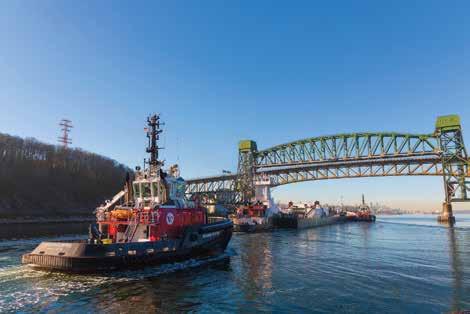
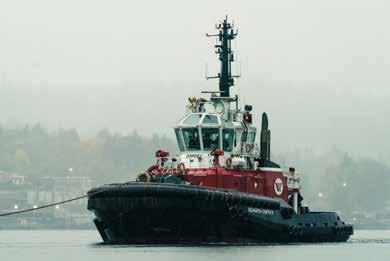



To date, all three of HaiSea’s fully electric tugboats, the Wamis, Wee’git, and Brave have arrived in North Vancouver and were recently joined by the HaiSea Kermode – North America’s first large dual-fuel LNG escort tug.
and detect danger. But over the past several decades, an increasing number of humancaused sources have been filling the seas with sound. The increase in noise pollution can negatively impact foraging, communication, reproduction, and other behavioural aspects of marine mammals, especially whales, dolphins, and porpoises.
“This Underwater Noise Notation delivers on one of the first promises that our team made to the Haisla Nation: that we would protect the Douglas Channel and their home by producing one of
the greenest tugboat fleets in the world,” says Jordan Pechie, senior vice president of Seaspan Marine Transportation. “The HaiSea fleet was intentionally designed and built to protect the environment and our team is incredibly proud to honour this commitment.”
To date, all three of HaiSea’s fully electric tugboats, the Wamis, Wee’git, and Brave have arrived in North Vancouver and were recently joined by the HaiSea Kermode – North America’s first large dual-fuel LNG escort tug. Later this year, HaiSea’s full fleet will make its voyage up the
Douglas Channel to Kitimat, where it will be based to provide shipassist and escort towing services to LNG carriers calling at LNG Canada’s new export facility in the traditional territory of the Haisla Nation.
The HaiSea Wamis will help support Canada’s marine industry in a sustainable way, that can serve Canada for years to come. Together, we hope to create more efficient vessels like the HaiSea Wamis and foster a vibrant marine industry, while improving the health of the global ocean soundscape for marine life and the people who depend on it.
To learn more about HaiSea Marine, visit www.haiseamarine.com. a
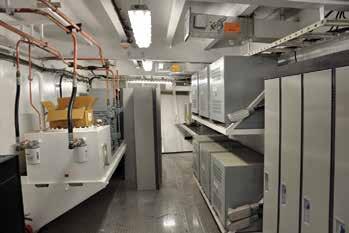


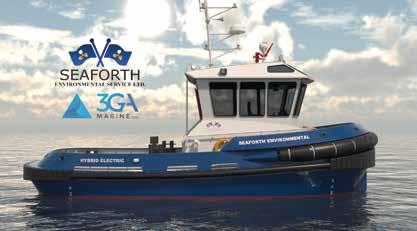
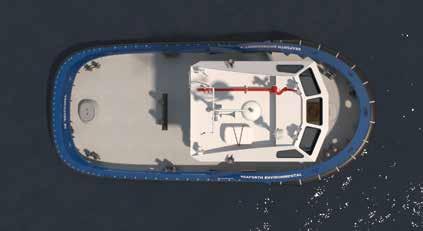
GA Marine Ltd. (3GA Marine), a leading naval architecture and marine engineering firm, has been contracted by Seaforth Environmental Service Ltd. (Seaforth) to design and manage the construction of a state-of-the-art, 12.0-metre, with hybrid power assist for range extension. Collaborating with Turkish shipyard TRX Marine (TRX), this groundbreaking vessel, with its zero-emission electric propulsion, showcases the innovative spirit and environmental commitment of all three companies involved.
Using their HT120 hull form as a foundation, 3GA designed the cutting-edge tugboat specifically to meet Seaforth’s needs for environmental boom placement operations along the pristine waters of the west coast. The first of its kind in the Vancouver Port Authority, the vessel is slated for delivery in the third quarter of 2024.
The tugboat’s power comes from an intelligent, compact electric propulsion system featuring nextgeneration battery technology. Relying on clean BC Hydro energy, the hybrid electric tug
Length Over All (LOA): 12.1m
Breadth: 5.17m
Depth: 2.55m
Draft: 1.7m
Displacement (prelim): 59.5 MT
Air Draft (max): 5.0m
Propulsion Power: 225kW
Genset Power: 116kW
Energy Storage: 294 kWh
Bollard Pull (est.): 4.5 MT
Complement: 2 persons
Gross Tonnage: 34.52 GT
achieves significant reductions in greenhouse gas (GHG) emissions and substantial fuel cost savings. The hybrid power system combines electric propulsion and a diesel generator, allowing the vessel to operate 95-100 per cent of the time on electric power during harbour duties, greatly minimizing diesel usage.
A 294-kWh energy storage system provides power for both propulsion and operational tasks. The design offers longterm advantages, such as easily upgradable battery technology, reduced fuel consumption, and major maintenance reductions. As a result, GHG emissions, including NOx and SOx, are significantly decreased. Additionally, the near-silent operation of the vessel has a positive impact on both shoreline ecosystems and marine life.
3GA Marine has worked closely with Transport Canada during the
construction phase, hosting virtual inspections of the hull throughout construction. 3GA Marine has worked with software developers to configure the technology to set up virtual meetings utilizing mixed reality goggles with RemoteSpark software. Through RemoteSpark, 3GA Marine is capable of hosting meetings with multiple shareholders online worldwide to view real time video. The Hololens goggles are worn by TRX staff on site, who are guided by a predetermined agenda of areas of interest for inspection. During the inspection, the Hololens operator can be directed through the Hololens audio, if there are areas where closer visual inspection is requested.
The Hololens virtual inspection capability that 3GA Marine provides owners is a huge cost savings to the project. Without the need for multiple staff and class surveyors to travel to site, the virtual inspections expedite the inspection process while still ensuring that all parties involved are satisfied with the progress and the workmanship of the vessels’ fabrication. This advancement in technology will serve owners, operators, surveyors, engineers, and others as a valuable aid during construction, during inspections, and can be utilized once the vessel is delivered.
3GA Marine has worked with Seaforth, TRX, and Transport Canada with this new emerging hybrid technology, resolving emerging challenges as they develop, to have a Transport Canada approved design. This
vessel is planned to be the first of many fit for purpose vessels that can be designed to suit an owners requirements.
This pioneering project highlights 3GA Marine’s industry-leading expertise in naval architecture and marine engineering, and it demonstrates the fruitful
collaboration between 3GA, Seaforth, and TRX in driving the maritime industry towards a greener, more sustainable future.
For more information or inquiries, please contact Daniel McIntyre, Vice President, 3GA Marine Ltd. –dmcintyre@3gamarine.com. a


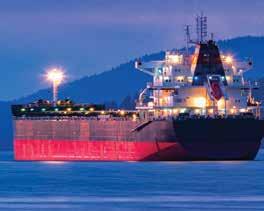



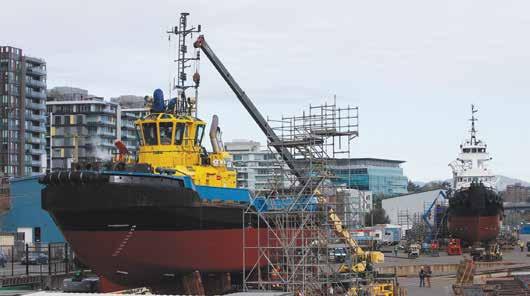
The arrival of tugs to Point Hope Maritime always generates a stir of enthusiasm as they are fanfavourites for our residential neighbours at Dockside Green where there are more binoculars per capita than any other neighbourhood in the Capital Region.
This spring, we welcomed the SAAM VENTA to Point Hope Maritime (Point Hope). Prior to coming to Point Hope, I spent my early career working for DAMEN, one of the world’s largest and foremost builders of maritime vessels, including tugs. As I watched our dedicated and skilled docking crew bring this majestic tug into the shipyard, it was like seeing an old friend arrive. Fifteen years ago, on the other side of the world, I was involved in building this vessel at DAMEN Shipyard Galati, Romania. She was the sixth tug of a series of ten built in 2009, and she traveled in 2014 from Brazil to Vancouver to become part of the SAAM Towage fleet. Shortly after bidding farewell to the SAAM VENTA, we had the good fortune of taking care of the SAAM SABA, the seventh tug in the series. In both cases, when we completed our work in the yard and launched these vessels, I was struck by the fact that the tugs looked as good as they did when my DAMEN team delivered them new in 2009. Impressive and gratifying.
Tugs are the workhorses of the sea and when these impressive vessels are in our yard on blocks, the sheer power of their mass reflects the importance of their work. Every hour that these warriors are not in service has a fiscal impact to our clients, and we take this reality seriously in the delivery of our services. It is
“Point Hope Maritime recently completed back-toback drydocking’s of our two DAMEN 2810 tugboats the SAAM VENTA and SAAM SABA. Both projects were on time and within budget, excellent work by the Point Hope Team.”
— Andrew Parkyn, Project Manager, SAAM Towage Canada Inc.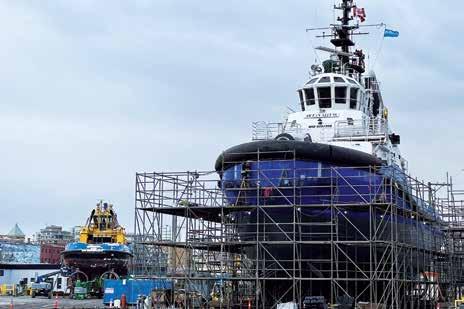
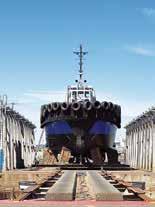

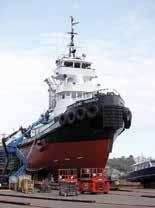
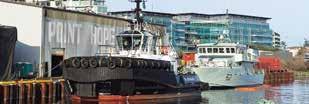

“The quality of workmanship exhibited by Point Hope Maritime is commendable, consistently meeting and exceeding the highest international standards. The dedication and attention to detail displayed by your team ensure that every task is completed with precision and excellence.”
— Marek Kaminski, Director Maintenance and Engineering, Tidewater Canada
not uncommon for our docking crew to capitalize on a high tide at 0200 hours to accommodate a client, and then to return later the same day to prepare a cart for the next docking. This May, we will complete the fourth spurline expansion in the shipyard increasing our capacity by an additional 70 feet enabling us to drydock six vessels of which three vessels can be up to 200 feet. This investment further strengthens our commitment to minimize service disruption for our clients. We’ve had the pleasure of receiving several tugs at the shipyard this spring, each one of them magnificent vessels, and many represent valued, long-term client relationships. Working on these gentle giants is a highlight for our team, who take pride in the quality and importance of their work. Each tug leaves our yard work-ready, strong with a renewed sheen; the safety and integrity of all operational systems reaffirmed. For our employees, their relationship to each vessel is personal. Their hardened hands, expertise and knowledge contribute to the success of our clients and help shape all the untold ocean adventure storiesthe silent legacies of every vessel that graces our yard.

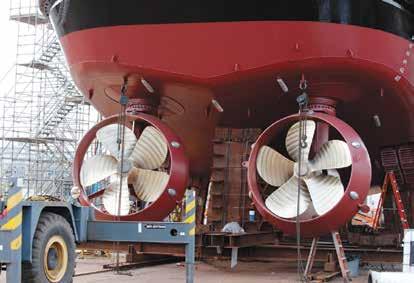
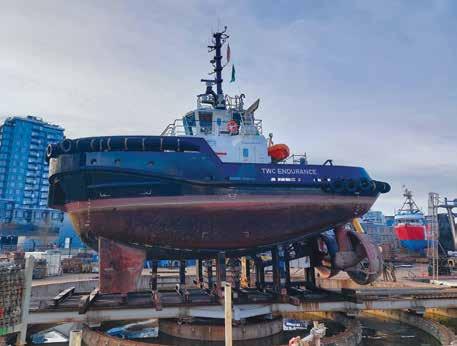

At Point Hope Maritime, we specialize in ship repair and maintenance, but at the beginning middle and end of each day, we are in the people business building and supporting industry relationships that are critically important to the North Pacific marine sector. Our clients
and our employees are the foundations of our business, and we are grateful to both.
On Sunday June 16, we will open our gates at Point Hope Maritime for our annual Open House.
This community event draws thousands of visitors of all ages,
many of them cycling or coming by water on Victoria Harbour Ferry to enjoy live entertainment and the opportunity to experience the shipyard up close hearing directly from our employees who take on the role of tour guides for the day, proud to share insight into their careers. a

With roughly 25,000 kilometres of coastline, British Columbia has the largest commercial shipping ports in Canada making it an active ocean-going transportation highway. The efficient movement of goods along the coast is at the heart of the province’s economic vitality, thanks to the support of 1,200 tugboats operating in its waters. In line with the CleanBC environmental commitments, two B.C. based tugboat operators, HaiSea Marine and SAAM Towage, are the first leaders taking on alternative fuel technology, and about to make B.C. home to the world’s largest hybrid and fully electric tugboat fleet.
Key players in the maritime sector’s sustainable movement
HaiSea Marine, majority owned by the Haisla Nation in partnership with Seaspan, is a prominent player in the northern B.C. region. Marking a technological leap, they recently welcomed the HaiSea Wamis, the first of their three fully electric tugboats.
Operating solely on electric power, the HaiSea Wamis, a Robert Allan Ltd. ElectRA 2800
design, will support operations at LNG Canada’s export facility in Kitamat. With a total battery capacity equivalent to running 70 Teslas all day, the HaiSea Wamis operates on Corvus Energy’s Orca batteries, reducing greenhouse gas emissions by approximately 1,700 tonnes per vessel per year. It takes a mere four hours to go from zero to a full charge, setting a new standard for efficiency in the maritime industry.
This partnership is not just technological progress but a model for inclusive collaboration with Indigenous communities. Haisla Nation’s agreement with Seaspan, a B.C. maritime industry stalwart, will ensure access to employment, training, and procurement opportunities for Haisla people.
Another industry trailblazer in British Columbia is, SAAM Towage, the leading harbour towage and oil and gas escort tugboat operator in the Americas, who has partnered with Canadian mining company Teck, to introduce two fully electric tugboats at B.C.’s Neptune Terminal and the Port of Vancouver.
These ElectRA 2300SX harbour/ ship assist tugs, also designed by
Robert Allan Ltd., are expected to reduce annual greenhouse gas emissions by approximately 1,200 tonnes per vessel per year which is the equivalent of approximately 600 cars a year off the road. This collaboration underscores the industry-wide commitment to sustainable practices and a reduction in greenhouse gas emissions, while showcasing the innovative mindset of the B.C. maritime industry.
This green revolution is made possible by Robert Allan Ltd., a Vancouver-based naval architect firm founded in 1928 and internationally recognized for their innovative designs. The firm’s progressive thinking has positioned them as a key player in the uptake of electrification technology on coastal craft. The company’s decarbonizing efforts began in 2009 with the delivery of the world’s first battery-hybrid harbour tug, the Carolyn Dorothy for Foss Maritime.
These five new tugs to the B.C. fleet will be able to perform nearly all of their daily operations quietly and cleanly from battery power, significantly reducing underwater radiated noise, improving the lives of Orcas and other marine life.

We represent more than just your BC Ports. We include marine deckhands, seafarers, office, maintenance, warehouse, waste recycling, retail, wholesale, grain services staff and more!
to see if we can help your group!
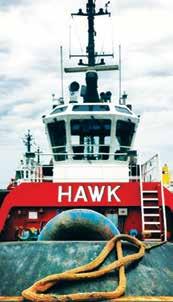
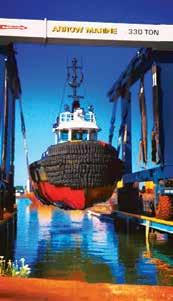
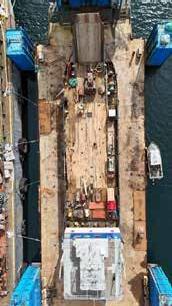



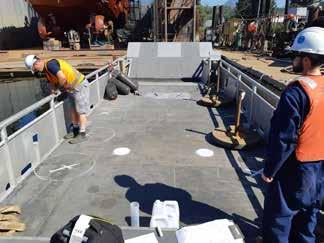
The collaboration between Robert Allan Ltd., Seaspan, Haisla Nation, SAAM Towage and Teck demonstrates
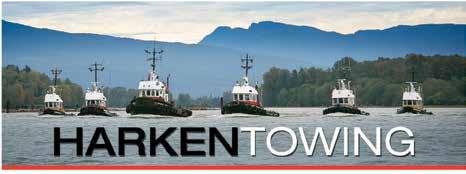
HARKEN TOWING CO. LTD.
• Canadian-owned and operated, professional-grade marine towing service in the Pacific Northwest for over 70 years.
• Bonded for cross-border towing in the U.S.A.
SAFE CERTIFIED EFFICIENT MARINE TOWING
Dedicated and experienced marine employees with decades of knowledge.
WE’VE GOT YOU COVERED
Our fleet of 500hp-to-1800hp tugs is available to meet your marine towing needs throughout the Pacific Northwest.
SERVICES
• Ramp, aggregate and general barge towing
• Ship loading • Fuel sites • Water taxi
• Log boom towing and storage

The introduction of hybrid and fully electric tugboats is a positive change for B.C.’s maritime industry, economy, and environmental impact.
The shift towards the use of electric propulsion systems onboard tugboats strategically aligns with CleanBC intentions – addressing underwater noise pollution to protect marine life and reducing the industry’s carbon emissions footprint. These electric tugboats showcase technological advancements while also bringing economic benefits. The B.C. maritime industry is estimated to generate billions of dollars, by supporting various sectors like oil, potash mining and logging which in turn contribute to the province’s GDP. The collaboration between Robert Allan Ltd., Seaspan, Haisla Nation, SAAM Towage and Teck demonstrates a collective effort to drive innovation and sustainability here in our province, making B.C. an ideal place to trade and do business.
As a result, the B.C. maritime industries commitment to the global energy transition in adopting this technology sets an example for the world in environmental stewardship, economic sustainability, and a cleaner, greener, maritime future.
Find out how to become a part of this naturally favourable path in the maritime industry by contacting Trade and Invest BC. a
 By
By
AGrizzly escorts a tanker from the newly upgraded Westridge Terminal, guiding it safely through the Narrows as it leaves Canada’s busiest port. To starboard, there’s another bear often spotted at Pier 94, this one a Kermode. But North Vancouver isn’t this spirit bear’s home; soon it will emerge from its south coast hibernation to make a permanent move north to Kitimat and the Douglas Channel, where like its grizzly bear relative, it too will escort vessels out to sea from a new marine export terminal.
Tasked with escorting LNG carriers
up to Q-Max size through the channel on world’s longest known escort route - approximately 159 nautical miles - HaiSea Kermode is certainly up to the task with capabilities that few other escort tugs anywhere can come close to matching. Able to generate escort steering forces exceeding 175 tonnes, it roughly doubles the performance of any other tug in British Columbia. Along with its sister, HaiSea Warrior, it is set to command the north where the pair will ensure safe passage of the world’s largest LNG carriers.
HaiSea Kermode distinguishes itself from other high-
performance escort tugs through its unparalleled capabilities.
A customized ultra-high performance, three-gear, 450 hp electric AGILE escort winch from Markey Machinery optimizes its escort potential, maintaining near-constant line tensions even when generating its maximum escort forces in significant sea states.
Airborne emissions are greatly reduced beyond even IMO Tier III standards when performing escort missions, thanks to LNG from its enhanced capacity tank, specifically sized for its recordduration escort missions. The
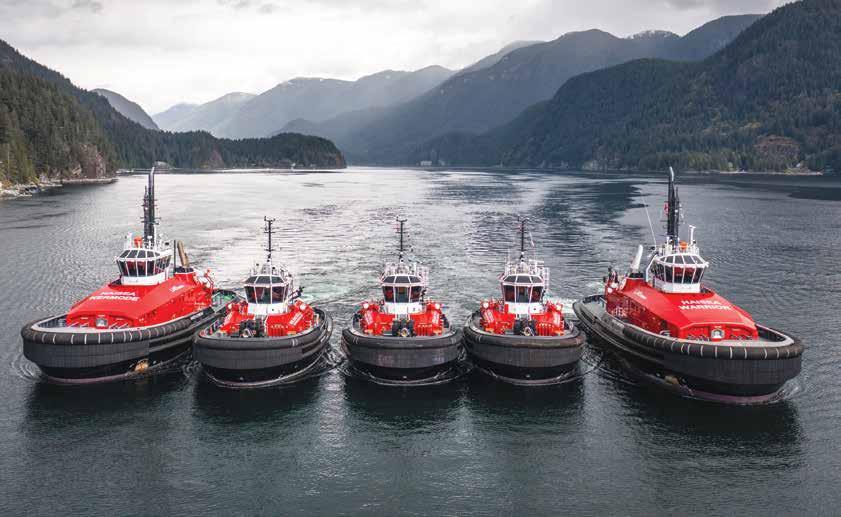
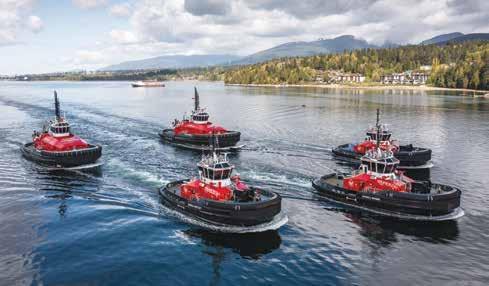
inclusion of a selective catalyst reduction (SCR) exhaust aftertreatment system - a rarity on LNG-fuelled tugs - further reduces emissions across the entire operational profile.
HaiSea Kermode and its battery electric counterparts are also the first tugs in the world to receive the American Bureau of Shipping (ABS)’s ENVIRO+ notation, representing the highest level of
environmental credential from ABS.
This cutting-edge tug provides its crews with enviable modern comforts, underscored by its ABS-class habitability notation (HAB). Each crew member benefits from the privacy of a single cabin with ensuite washroom, meeting the needs of an increasingly diverse workforce that is vital to the industry’s growth and
sustainability. The presence of a spacious lounge and a gymnasium further enriches life on board. Subtler benefits significantly improve the working environment as well, such as reduced noise from electrically powered winches instead of hydraulic ones, and a dynamic positioning system that eases operator fatigue when exposed while waiting for an inbound LNG carrier.
Designed primarily for escort towing in Douglas Channel, HaiSea Kermode’s high-bollard pull of 105 tonnes also enables it to lend a paw should it be needed to assist with ship-berthing operations, or for performing a rescue tow of a distressed vessel. Its emergency response
capabilities are augmented by significant oil recovery tankage and a Firefighting 1 class offship firefighting system, with the capacity to fill an Olympic swimming pool in just one hour.
These features are aptly suited for a vessel named by the Gitga’at Nation to represent the Spirit Bear and our shared sacred environment, and they embody a commitment to protecting the natural world.
With HaiSea Kermode securing its status as one of the world’s premier escort tugs, and with both HaiSea Marine and SAAM Towage Canada recently incorporating the world’s finest battery electric harbour tugs into their fleets, British Columbia’s marine towage industry has positioned itself as the global leader in the innovation and adoption of advanced tug technologies.
What will be the next remarkable B.C. Tugboat to captivate the
international marine towage industry’s attention? News has it that steel has recently been cut on the world’s first newbuild dual-fuel methanol-diesel tugs, and they are set to call southern
British Columbia home. This suggests that the global industry might have to bear being envious of B.C.’s new vessels for the foreseeable future. a


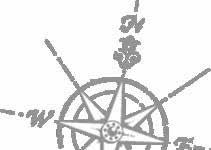
by the Vancouver Fraser Port Authority
Port terminals and supply chain partners at Canada’s largest port demonstrated stability and reliability over a challenging period— keeping trade moving and supporting Canadians and their businesses.
Cargo volumes through the Port of Vancouver increased by 6 per cent in 2023, as terminal operators and supply chain partners moved a record 150.4 million metric tonnes (MMT) of trade.
The Vancouver Fraser Port Authority’s 2023 cargo statistics, released in March, show it was a mixed year at the Port of Vancouver, with growth in some sectors and softening in others.
Notably, bulk and containerized exports, auto imports and cruise all grew—including near-record grain exports—while container imports softened in line with trends seen across the West Coast.
“We know reliable access to international markets is vital for Canadian exports and Canadian businesses—supporting jobs, investment, and economic activity from coast to coast,” says Peter Xotta, President and CEO of the Vancouver Fraser Port Authority. “I want to acknowledge the resilience of Port of Vancouver terminal operators and supply chain partners, as they moved record volumes of trade in 2023 against a challenging backdrop
to support Canadians and their jobs and businesses.”
Almost as much cargo moved through the Port of Vancouver in 2023 as moved through Canada’s next five largest ports combined, while the port handled North America’s most diversified range of cargo—including bulk, containers, breakbulk and automobiles, as well as overseeing cruises.
“In 2023, we saw operations at the Port of Vancouver support a 12 per cent increase in export volumes and enable trade with 142 different countries, including delivering a near-record Prairie grain harvest to world markets,” Xotta continues. “The record cargo and export volumes
“In 2023, we saw operations at the Port of Vancouver support a 12 per cent increase in export volumes and enable trade with 142 different countries, including delivering a near-record Prairie grain harvest to world markets.”
moved last year demonstrate that one of the port’s key strengths and competitive advantages continues to be its diversification—both in terms of the commodities it can handle and the countries it connects to.”
Trade last year was affected by a number of global and domestic challenges, including a cooling global economy, geo-political issues such as disruptions to the Panama Canal and Red Sea trade routes, and a strike that affected container, bulk, breakbulk, and auto terminals at Port of Vancouver. The recovery from July’s 13-day strike by B.C. longshore workers—which directly
impacted operations throughout the port aside from a few areas including cruise and bulk grain— was both steady and challenging, with fluidity largely restored in the fall.
Bulk exports increased 13 per cent in 2023, compared to 2022, to reach a record 91.5 MMT— including increases in grain, sulphur, coal and petroleum product volumes. Nine bulk grain terminals at the port helped to export 14.7 MMT of wheat to 38 different countries, a 52 per cent year-over-year increase, while canola exports increased 36 per cent to 7.0 MMT and specialty crops grew 30 per cent to 4.0 MMT.

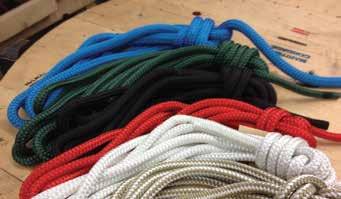
Canadian grain export volumes increased sharply in 2023 because a bumper crop season was preceded by a droughtaffected season.
Automotive was up 36 per cent in 2023 as the sector returned to pre-pandemic volumes, with supply chain and production issues easing and consumer demand for vehicles remaining resilient. Breakbulk volumes were down 7 per cent, including a 25 per cent drop in foreign breakbulk volumes due largely to the cooling economy and a fall in metals imports, as well as exports of forestry products shifting to containers.



Cruise had another strong season, with the Canada Place cruise terminal at the Port of Vancouver having 15 of its 20 busiest days ever in 2023, as it welcomed a record 1.24 million passengers and 332 ship visits.
“Vancouver’s cruise sector continues to be a success story with further growth in 2023— bringing more visitors than ever before to our world-class city and supporting local businesses and jobs, particularly in hospitality and tourism,” Xotta says. “We look forward to continuing to partner with cruise lines and industry to build the capacity and sustainability needed to keep this
important sector thriving.”
Container volumes were down 12 per cent year-over-year, in line with trends seen across North America’s West Coast, as a cooling global economy and overstocked retailer inventories impacted imports (laden inbound containers were down 13 per cent). Containerized exports (laden outbound) continued to recover from pandemicera disruptions and were up 7 per cent in 2023, as Canadian businesses used the increased availability of empty containers to deliver goods to markets across the globe.
“While there was a softening of container volumes moving through the Port of Vancouver in 2023, Canada’s container sector remains on a long-term growth trajectory and we saw encouraging signs of recovery in Q4 as year-over-year volumes started to grow,” Xotta says. “We continue to partner with industry and government to ensure the port has the capacity needed to support Canada’s long-term trade needs, including expanding terminal capacity and investing in digital tools, collaboration and data sharing to ensure existing infrastructure is used to its maximum potential.” a
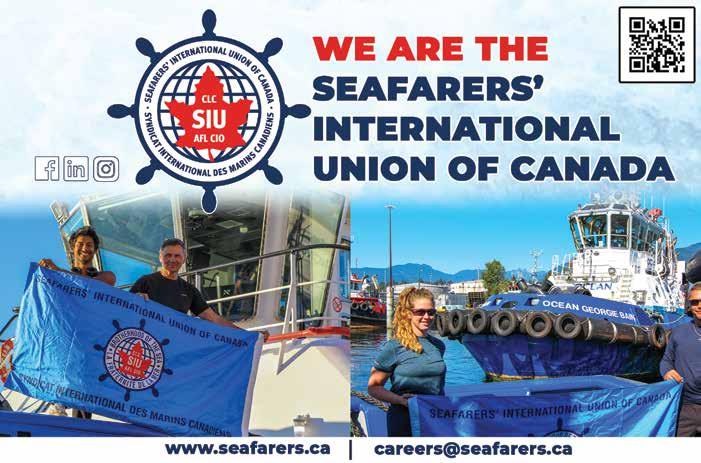
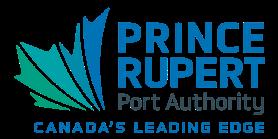
The Prince Rupert Port Authority (PRPA) announced in January that 23.5 million tonnes of cargo moved through the Port of Prince Rupert in 2023, five per cent less than volumes in 2022.
This marks a third consecutive year of volume decline and reflects challenges of shifting global shipping routes, soft demand for imports, and competition with other North American trade gateways for discretionary cargo. However, despite the decline in volumes,
significant milestones were reached in 2023 that support the evolution of the trade gateway to become more competitive, resilient, and sustainable in the near and long-term.
“The Port of Prince Rupert is at a critical juncture, and we are focused on actively expanding the services, capacity, and capabilities required to strengthen our competitive advantage that trade partners and industry have come to rely on and grow our gateway,” says Shaun Stevenson, President and CEO, Prince Rupert Port Authority. “The 2023 results
underscore the importance of the projects already underway to develop large-scale transloading infrastructure and build new energy export facilities. These developments will open a new chapter in intermodal trade at the Port and anchor Canada’s role in global energy security for decades to come.”
DP World Prince Rupert’s Fairview Container Terminal saw a 32 per cent decrease in volumes in 2023. This significant drop is due to a broader decline in North American intermodal imports and strong competition on Transpacific trade


routes. Terminal performance was also impacted by labour action that halted operations for 13 days in Q3.
Demand for western Canadian energy products was strong in 2023, with AltaGas’ Ridley Island Propane Export Terminal shipping nearly two million tonnes, a 13 per cent increase over 2022. Pembina’s Watson Island LPG Bulk Terminal entered its third year of operations, handling close to 494,000 tonnes, an eight per cent decrease year-over-year. Drax’s Westview Wood Pellet Terminal shipped 1.3 million tonnes to markets in Europe and Asia.
Trigon Pacific Terminals also saw a strong year, moving 8.8 million tonnes of dry bulk product through its terminal, including 5.4 million tonnes of metallurgical coal. Shipments of that product saw a 51 per cent jump over 2022.
A stronger harvest year contributed to Prince Rupert Grain shipping nearly 3.6 million tonnes of western Canadian agricultural products, an 11 per cent rise yearover-year.
Cruise traffic almost doubled over 2022 volumes, with 81,327 cruise passengers transiting through Prince Rupert in 2023. It was also the first year that cruise terminal
operations, scheduling, passenger services, and shore excursions were managed by Global Ports Holding (GPH) – the world’s largest independent cruise port operator.
In 2023, the Port of Prince Rupert moved forward on multiple strategic projects and partnerships that are essential to strengthening and diversifying the trade gateway. These projects will ensure the Port of Prince Rupert can continue to anchor competitive and resilient trade, while taking a leading role in developing sustainable global supply chains:
• Construction was started on the $750-million Ridley Island Export Logistics Project, an innovative large-scale facility that will provide rail-to-container transloading of multiple export products. RayMont Logistics will develop and operate the site’s transload facilities that will provide a total capacity of 400 thousand TEUs annually and will commence operations in Q3 2026.
• The Ridley Energy Export Facility, a joint venture between AltaGas and Vopak, executed a longterm lease on a 190-acre site administered by the Prince Rupert Port Authority. The
proposed terminal will develop infrastructure that can provide over seven million tonnes of capacity for a variety of liquid bulk cargoes, including lowercarbon energy sources such as propane, butane, and methanol. Early works began on the bulk liquid storage and export facility in Q4 2023, with a Final Investment Decision anticipated in Q2 2024.
• GPH continues to work with PRPA, local businesses, and cruise lines to grow passenger volumes over the next several years, while working to ensure the infrastructure and amenities are in place to support a significant increase in cruise visitors. a














